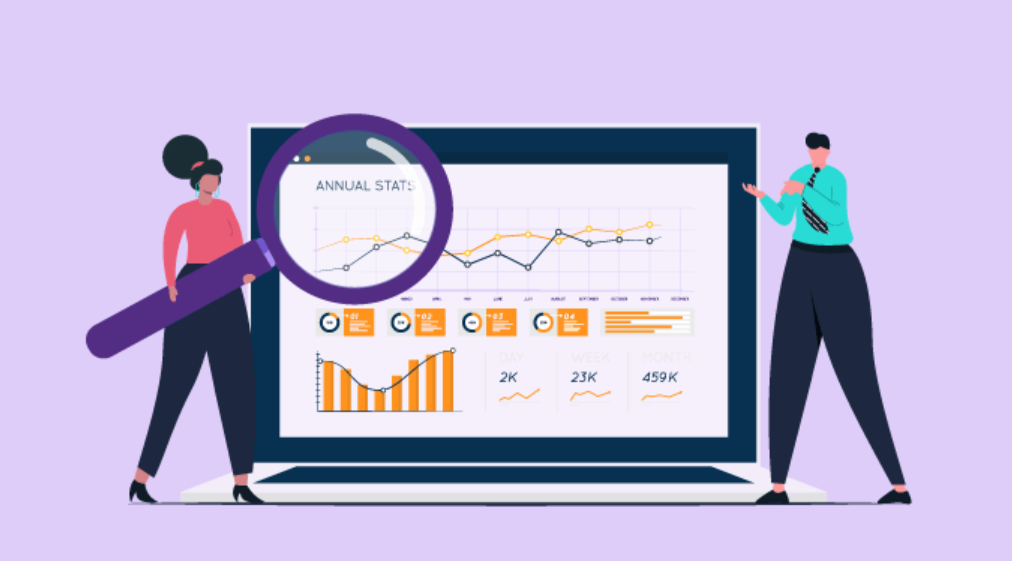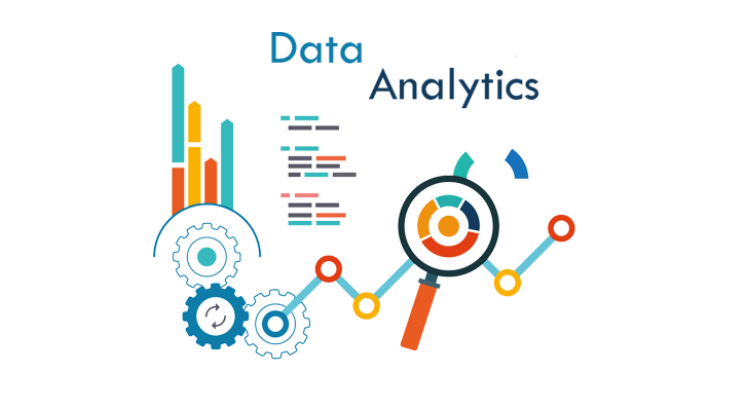In the dynamic landscape of digital marketing, businesses strive to stay ahead by leveraging data-driven strategies. One indispensable tool in this arsenal is analytics data. However, the real power lies not just in collecting vast amounts of data but in the strategic segmentation of that data. In this comprehensive guide, we will delve deep into the importance of segmenting your analytics data for optimal conversion optimisation.
Understanding the Foundation: Analytics Data and Its Role in Conversion
Before we explore the nuances of segmentation, it’s crucial to grasp the fundamental role analytics data plays in the conversion optimisation process. Analytics provide insights into user behaviour, website performance, and the effectiveness of marketing efforts. It’s the compass guiding businesses toward their goals, but without proper interpretation, it’s just noise.
Analytics data empowers businesses to make informed decisions. It unveils user preferences, identifies pain points in the customer journey, and highlights high-performing channels. This knowledge is the cornerstone of effective conversion optimisation.
The Pitfalls of One-Size-Fits-All Analytics
While general analytics can offer valuable insights, relying solely on overarching data is akin to navigating a ship without a compass. It lacks the precision needed to tailor strategies to different segments of your audience.
The Fallacy of Averaging
When we talk about averaging data, we mean taking the overall or average values of certain metrics without considering the individual variations within the dataset. This can be misleading because it doesn’t account for outliers or specific patterns that might exist within different segments of your audience.
Example: Consider the metric of “session duration,” which is the average time a user spends on your website. If you only look at the overall average, you might think that users, on average, spend a significant amount of time on your site. However, this average could be skewed by a subgroup of users who spend a long time, while a significant portion of users may actually bounce off quickly. Segmenting data allows you to identify and understand these hidden patterns within specific audience segments.
Tailoring to Diverse Audiences

Not all website visitors are alike. They vary in terms of demographics, preferences, and intents. A universal or one-size-fits-all approach to conversion optimisation ignores these differences among your audience members. This oversight can have detrimental effects, potentially alienating valuable segments of your audience.
Demographics: Your audience may consist of individuals with different ages, genders, locations, income levels, and more. Each of these segments may respond differently to marketing strategies.
Preferences: Different segments have varied preferences in terms of content consumption, product features, or even the tone of communication. Tailoring your approach to these preferences can significantly impact engagement and conversions.
Intents: Users visit your website with diverse intentions. Some might be looking for information, while others are ready to make a purchase. Understanding and catering to these varied intents is essential for effective conversion optimisation.
In essence, acknowledging the diversity within your audience and tailoring your strategies accordingly is crucial for maximising the impact of your conversion optimisation efforts. One-size-fits-all analytics oversimplifies the complexity of user behaviour and preferences, making it challenging to create strategies that resonate with the specific needs of different audience segments.
The Strategic Art of Analytics Data Segmentation
Segmentation is the process of dividing your audience into distinct groups based on specific criteria. This strategic approach enables a more detailed and insightful view of your audience, laying the groundwork for targeted and effective optimisation strategies.
Instead of treating your entire audience as a homogeneous group, segmentation allows you to dissect them into smaller, more homogeneous segments. This granularity is crucial for tailoring strategies to meet the unique needs and characteristics of each segment.

Demographic Segmentation: Beyond Age and Gender
As we mentioned above, demographic segmentation involves categorising your audience based on factors such as age, gender, income, education, and cultural nuances. While age and gender serve as foundational elements, effective demographic segmentation delves deeper into these variables, providing a more comprehensive understanding.
Age and gender are fundamental demographic factors, but they only scratch the surface. To truly connect with your audience, you need to consider additional aspects such as income levels, educational backgrounds, and cultural nuances.
Knowing more about your audience’s demographics allows for highly targeted messaging. For instance, tailoring your communication to specific income brackets or cultural preferences ensures that your messages resonate more effectively with each segment.
Behavioural Segmentation: Decoding User Intent
Behavioural segmentation focuses on analysing user behaviour, including actions like pages viewed, time spent on the website, and specific interactions. This method provides valuable insights into user intent, enabling the creation of personalised experiences.
Understanding the behaviour of your users involves decoding the intent behind their actions. For instance, differentiating between first-time visitors and returning customers provides insights into their respective needs and expectations.
Armed with behavioural segmentation, you can tailor your approach to different user groups. For instance, a first-time visitor might benefit from introductory content, while a returning customer may appreciate personalised recommendations based on past interactions.
Psychographic Segmentation: Tapping into Motivations
Psychographic segmentation delves into the psychological aspects of consumer behaviour, focusing on values, interests, and lifestyles. By understanding the motivations that drive your audience, you can craft messages that resonate on a deeper, more emotional level.
Consumer psychology is a potent force in conversion optimisation. Knowing what motivates your audience enables you to align your products or services with their desires. This alignment enhances the relevance and appeal of your offerings, fostering stronger connections with your audience.
The Impact on Website Design and User Experience

Segmented data plays a pivotal role in shaping personalised user journeys, where understanding the unique paths of different segments becomes the compass for optimisation. This goes beyond surface-level customisation; it involves strategic content placement, calls to action, and navigation adjustments. The goal is to ensure a seamless and satisfying experience for each distinct group within your audience.
Content, often regarded as the bridge between your brand and the audience, takes center stage as the heart of conversion. Here, segmentation is not just a guiding principle but a driving force behind content creation. By addressing the specific needs and pain points of diverse segments, customisation becomes the key to unlocking conversion potential. Whether it’s crafting blog posts that resonate with a particular demographic or tailoring product descriptions to meet the unique preferences of another, the art of segmentation breathes life into your content strategy.
Landing pages, acting as the gateways to conversions, gain newfound effectiveness through segment-specific optimisation. Tailored information and offers presented on these pages cater directly to the preferences and behaviours of specific audience segments. The analysis of segment data serves as a compass, pinpointing the elements that resonate most with each audience and allowing for precise optimisation of landing page design. In essence, the journey from personalised user experiences to tailored content and optimised landing pages is a strategic continuum, ensuring that every interaction is finely tuned to the diverse expectations of your audience segments.
Driving Marketing Strategies with Segmented Insights
Segmentation doesn’t stop at the website; it permeates every aspect of your marketing strategy. From email campaigns to social media efforts, understanding your audience segments is the linchpin of success.
Targeted Email Campaigns
Targeted email campaigns are not only more engaging but also more efficient. By sending content that is more likely to resonate, businesses can maximise the impact of their email marketing efforts, achieving higher conversion rates with fewer resources.
Precision in Social Media Advertising
Social media platforms, being dynamic and expansive, offer robust tools for audience segmentation. Crafting targeted ads based on demographics, interests, and behaviours becomes a powerful strategy. This ensures that your message is delivered to the right people at the right time, maximising the impact of your advertising budget.
By reaching the most relevant audiences, businesses can optimise their return on investment (ROI) and ensure that their ad spend is allocated strategically.
SEO Optimisation for Varied Intent
Users come to search engines with various intentions, from seeking information to making a purchase. Understanding this diversity allows businesses to optimise their content for a wide range of keywords, capturing audiences at different stages of the customer journey.
Analysing the Impact: Measuring Success through Segmentation

The effectiveness of segmentation lies in its ability to drive measurable results. Tracking key performance indicators (KPIs) specific to each segment provides valuable feedback for ongoing optimisation efforts.
- Conversion Rate by Segment: Comparing conversion rates across different segments reveals which groups are most responsive to your strategies. This insight allows you to allocate resources where they’ll have the most significant impact.
- Customer Lifetime Value Variation: Not all customers are equal in terms of long-term value. Analysing customer lifetime value by segment helps prioritise high-value segments and tailor retention strategies accordingly.
- A/B Testing with Precision: A/B testing is a cornerstone of conversion optimisation, but its power multiplies when applied to segmented audiences. Testing variations within specific segments hones in on the elements that resonate most with each group.
Overcoming Challenges in Segmentation
While segmentation is a potent tool, it comes with its set of challenges. From data accuracy to implementation hurdles, addressing these challenges is crucial for reaping the full benefits of analytics data segmentation.
The reliability of your insights is intricately tied to the quality of the underlying data. Regularly auditing and cleansing your data is imperative to maintain accuracy and consistency, guarding against skewed conclusions that may arise from distorted information.
In the dynamic landscape of segmentation, evolution is constant. As your understanding deepens, so should your techniques. Elevating your approach to include advanced segmentation methods, such as predictive analytics and machine learning, propels your optimisation efforts to a realm of heightened precision and efficacy.
While segmentation offers a nuanced view, it risks complexity if not strategically managed. Striking the right balance between granularity and practicality is key to ensuring that your segmentation efforts remain both manageable and actionable. This equilibrium ensures that the insights derived from segmentation are not only comprehensive but also pragmatic in informing strategic decisions.
Future Trends in Analytics Data Segmentation

As technology advances, so do the possibilities within analytics data segmentation. Staying ahead of emerging trends is key to maintaining a competitive edge in the digital landscape.
The integration of artificial intelligence and machine learning is revolutionising data analysis. Predictive segmentation, automated insights, and real-time personalisation are on the horizon, promising even more precise optimisation.
Cross-Channel Integration for Holistic Insights
Breaking down silos between different channels of data—website analytics, social media metrics, CRM data—provides a holistic view of your audience. Integrated insights enable more comprehensive and effective segmentation.
The Ever-Evolving Journey of Conversion Optimisation
In conclusion, the importance of segmenting your analytics data cannot be overstated. It is the compass guiding your ship through the vast sea of digital marketing, ensuring you navigate with precision and purpose. From understanding diverse audience segments to tailoring every aspect of your strategy, segmentation is the key to unlocking unparalleled conversion optimisation.
As technology continues to advance, businesses must embrace the ever-evolving landscape of analytics data segmentation. Those who master this art will not only stay afloat but will thrive in an era where personalised, targeted, and data-driven strategies define success in the digital realm. The journey towards optimal conversion optimisation through analytics data segmentation is ongoing—an exciting voyage with boundless opportunities for those ready to explore and innovate.
While segmentation is a potent tool, it comes with its set of challenges. From data accuracy to implementation hurdles, addressing these challenges is crucial for reaping the full benefits of analytics data segmentation.
The reliability of your insights is intricately tied to the quality of the underlying data. Regularly auditing and cleansing your data is imperative to maintain accuracy and consistency, guarding against skewed conclusions that may arise from distorted information.
In the dynamic landscape of segmentation, evolution is constant. As your understanding deepens, so should your techniques. Elevating your approach to include advanced segmentation methods, such as predictive analytics and machine learning, propels your optimisation efforts to a realm of heightened precision and efficacy.
While segmentation offers a nuanced view, it risks complexity if not strategically managed. Striking the right balance between granularity and practicality is key to ensuring that your segmentation efforts remain both manageable and actionable. This equilibrium ensures that the insights derived from segmentation are not only comprehensive but also pragmatic in informing strategic decisions.


